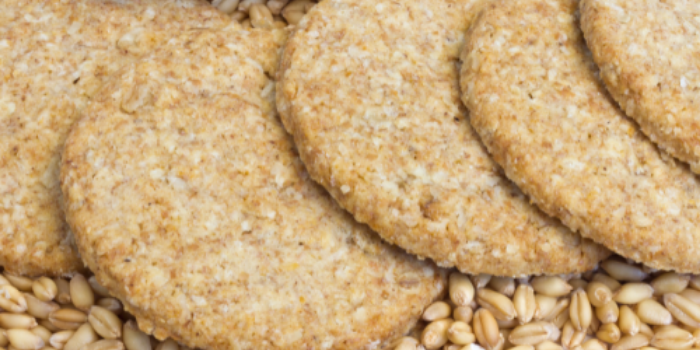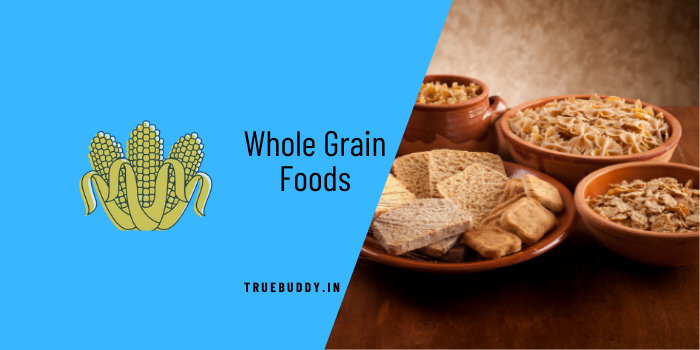Whole Grain Foods are rich in carbohydrates, vitamins, and minerals. They are naturally fiber-rich that help weight management and lower the risk of heart disease, diabetes, and cancer. Of all, whole grain foods have the most health benefits and are the easiest way to make your life healthy. Whole grain food is a combination of valuable nutrition. This includes protein, fiber, B vitamins, antioxidants, and trace minerals like iron, zinc, copper, and magnesium.
Dieticians recommend making at least half the grains in your diet whole grains. For the obvious reason of great health benefits, there is a huge demand for whole-grain food items in the market. As a result, the market is full of whole-grain versions of rice, bread, cereal, flour, and pasta.
What are Whole Grains?

It is a grain that includes bran, germ, and endosperm. But generally, these are being stripped off to enhance the taste. But when these are not stripped off and used as a whole, it is said a whole grain. Its taste is a bit coarse and not everyone can include it in their daily diet.
The whole grains list includes Barley, Brown rice, Buckwheat, Bulgur (cracked wheat), Millet, Quinoa, Oatmeal, and Popcorn. All these can be easily used as the main ingredients of the main meals of the day. However, it is a challenge to tell which foods are whole-grain. It has become a marketing strategy to use words like “multigrain”, “100% wheat”, “bran,” and “stone-ground”, but none indicates the product is whole-grain.
Whole Grain vs Multigrain
The whole-grain and multi-grain at a glance look similar and cannot be differentiated. But, the two are different. The whole grain means the grain is unprocessed and the grain kernel is used as a ‘whole’. A kernel includes the bran, germ, and endosperm. For instance, whole-grain flour has all three components.
The bran: It is the outer layer of the seed that has fiber, B vitamins, and antioxidants.
The germ: It is the innermost layer of the seed that contains protein, healthy fat, minerals, and B vitamins.
The endosperm: It is the middle layer of the kernel that contains protein, carbohydrates, and a small number of minerals and vitamins.
In contrast to this, the multigrain includes more than one type of grain, although none of them may necessarily be whole grains.
Whole Grain Nutrition Facts
The whole grain mainly contains dietary fiber and protein. It is said that there is 28 % fiber and 26% protein in whole grains. Apart from these, there is 19% magnesium, 15% sodium, and 10% calcium. The carbohydrate content is approximately 14%. There is a small amount of Iron, fat, and Vitamin B6. Based on food and processing, these might get altered. For instance, whole grain bread has added sugar that reduces these nutritional values. Also, brown rice, of all the grains is known to contain the least fiber.
Whole Grain Food Benefits

- Whole grain has the maximum nutritional value. The fiber content in wheat bran controls blood sugar and cholesterol. It keeps bowel movements healthy. Other minerals such as magnesium, phosphorous, and iron are good for bone health.
- The second most important benefit of whole grain is it lowers the risk of heart disease and stroke. The rawness of the whole grain is better for the heart than processed refined food. Vitamins, fiber, and antioxidants boost heart health.
- Contrary to carbohydrate-rich food, whole-grain food aids in weight management and reduces the risk of obesity. Whole grain high-fiber foods reduce overeating. This eventually leads to weight loss. It is said that eating 3 servings of whole grains daily lowers body mass index (BMI).
- With reduced obesity and weight, whole-grain food also lowers the risk of type 2 diabetes. Fiber and magnesium regulate carbohydrate and insulin sensitivity.
- These same nutrients act as a pre-biotic and support healthy digestion, lowering the risk of constipation.
- The other whole-grain health benefit is that it reduces chronic inflammation and the risk of cancer.
- These benefits cannot be true in the case of those who have gluten sensitivity. Wheat, barley, and rye contain gluten and if the gluten-sensitive consumes them, they can show symptoms of fatigue, indigestion, and joint pain.
- Also, some grains are high in short-chain carbohydrates called FODMAPs. These can cause symptoms in people with irritable bowel syndrome (IBS).
Whole Grain Diet Plan
Whole grains can be incorporated into the diet in many ways. The easiest is to find whole-grain alternatives to refined grains in the diet.
For instance, replace white pasta with 100% whole-wheat or other whole-grain pasta. This can be followed by bread and cereals.
But, be sure to look for the word “whole” in front of types of grains. If it simply says “wheat” instead of “whole wheat,” it’s not whole.
Another option can be to make oatmeal porridge or, swap white rice with brown rice, or for a different whole grain. Adding these grains to soups, baking and snakes can be a good choice.
Final Words
All the components of the grain together make whole grain, thus whole grain is the inclusion of bran, germ, and endosperm of grain in a food. Since the components are unprocessed and used in their natural form, their nutritional values remain intact which makes it the healthy choice for daily meals.
Whole grain high-fiber foods help in reducing the risk of obesity, cancer, indigestion, inflammation, and many other day-to-day health-related issues. This reduces the risk of premature death.
For improved health and longevity, consider adding whole grains to your diet every day. Healthy, whole-grain breakfast cereals, such as steel-cut oatmeal, are a popular choice.
Related Articles for You:
- Pranayama Benefits: Protects From Diseases And Keeps Healthy
- 10 Best Herbal Tea For Weight Loss And Slimming
- The 8 Best Chyawanprash In India For Strong Immunity
- The 10 Best Immune Booster Supplements
- Triphala Powder- A Powerful Herbal Remedy
- 10 Best Vitamin C Supplements And Their Health Benefits
- The 6 Best Vitamin D Supplements And Their Health Benefit
- How To Overcome Anxiety Disorder By Improving Eating Habits
- Reasons To Include Brown Bread In The Daily Meal
- What Are The Health Benefits Of Eating Peanut Butter?
- Best Non-Stick Tawa for Easy Roti Making - October 5, 2024
- Best Towel Racks to Keep Your Bathroom Organized and Tidy - October 5, 2024
- Upgrade Your Bathroom with the Best Mirror Cabinets in India - October 5, 2024
